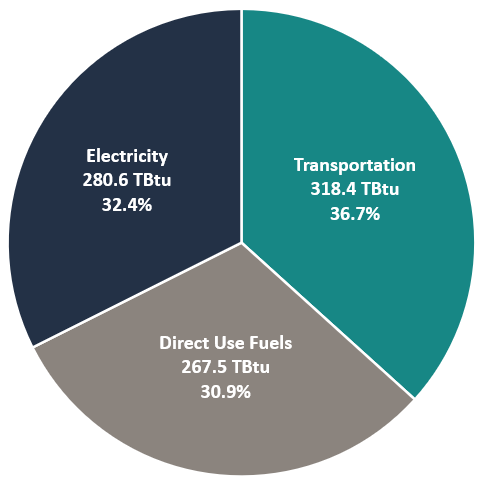The Oregon Department of Energy is responsible for collecting and analyzing data about energy in Oregon.
ODOE regularly collects data about Oregon's energy supply, use, and resiliency. Analyzing the information is critical to understanding the state's current energy landscape and for guiding decision-making and statewide energy planning.
Most of Oregon's energy is used for transportation, heating and cooling, and electricity. Learn more about how energy produces, imports, and uses energy in our
Biennial Energy Reports.
 Transportation
Transportation includes personal, passenger, and commercial vehicle fuels, both on and off the roads, plus airplanes, boats, barges, ships, and trains. Nearly all transportation-related sources of energy are imported from out of state for in-state use. When it comes to the amount of money Oregonians pay for energy, the cost of transportation fuels makes up about half.
Electricity is where most people begin when thinking about energy — the critical resource that powers our day-to-day lives. Hydroelectric power makes up the largest portion of Oregon's
electricity resource mix, followed by coal and natural gas. With our
Renewable Portfolio Standard, half of Oregon's electricity will come from renewable resources by 2040.
Direct Use Fuels
Direct use fuels include fuel oil and natural gas used to heat homes and commercial spaces, fuels used for other residential purposes, such as gas stoves, solar thermal heating, and fuels used directly in industrial processes.